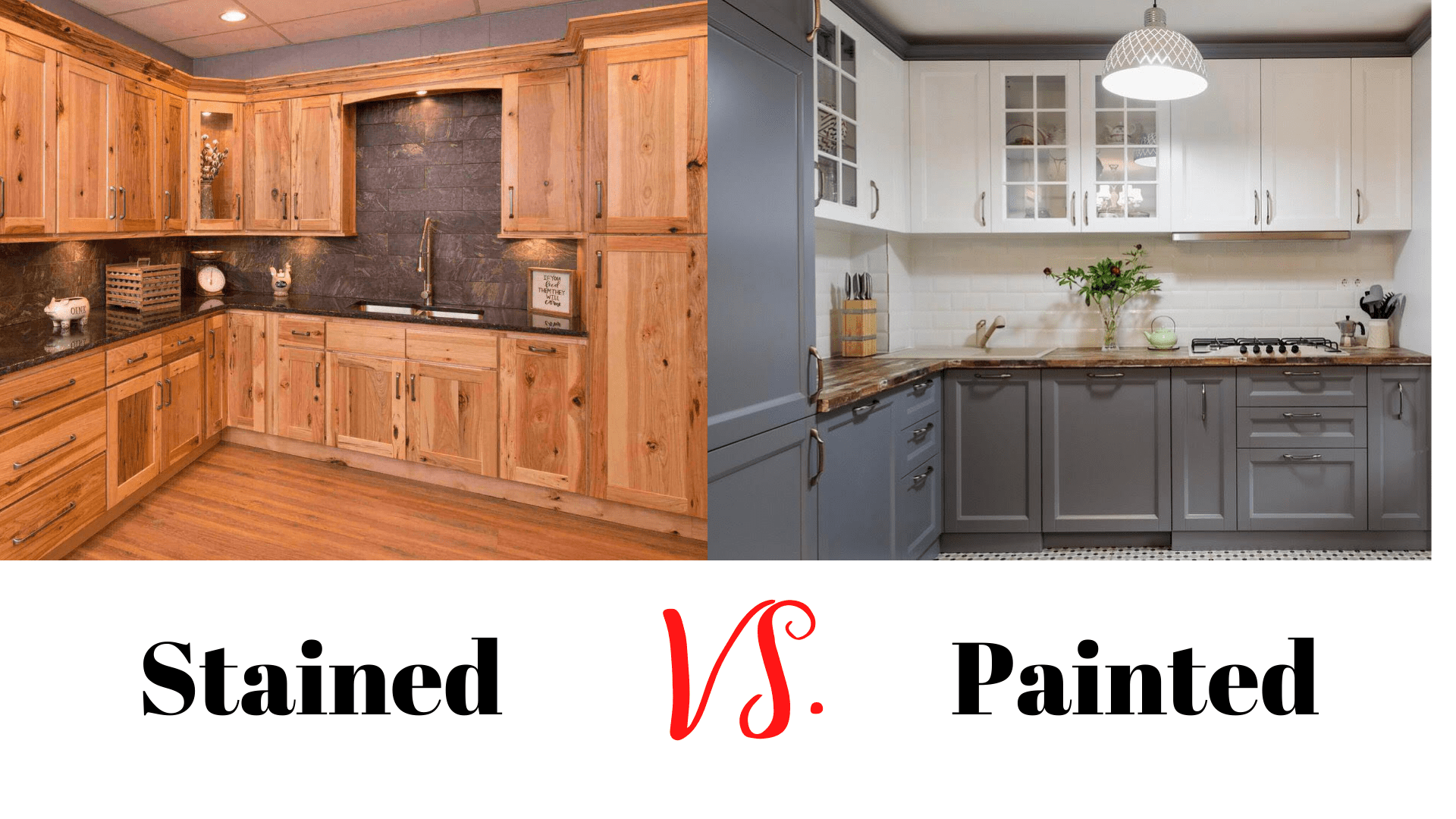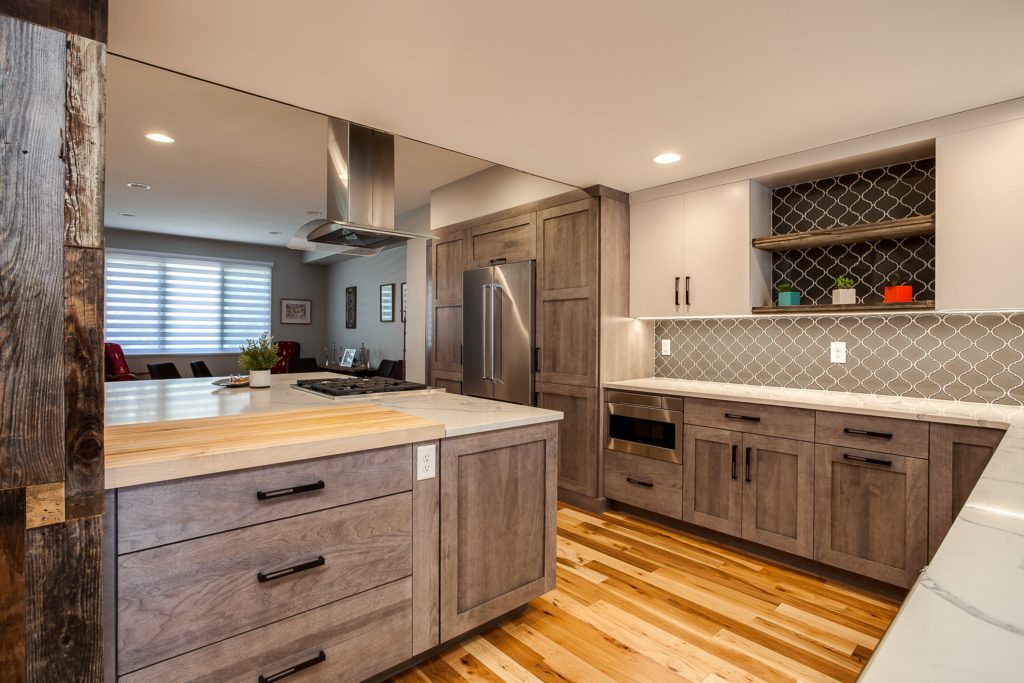Aesthetics and Style: Painted Vs Wood Cabinets

Painted and wood cabinets each offer a distinct visual appeal, influencing the overall ambiance of your kitchen. The choice between the two hinges on personal preference, the existing kitchen design, and the desired aesthetic.
Visual Appeal
The visual appeal of painted and wood cabinets is determined by a range of factors, including the color, finish, and style. Painted cabinets offer a clean, crisp look and allow for endless color customization. They can be painted in any color imaginable, from classic white to bold hues, creating a modern, contemporary, or traditional feel. Wood cabinets, on the other hand, boast natural beauty and warmth, showcasing the unique grain patterns and textures of various wood species. The application of different stains and finishes further enhances their visual appeal. For example, a light stain on maple cabinets creates a bright and airy feel, while a dark stain on cherry cabinets provides a rich and sophisticated look.
Style and Design
Painted and wood cabinets complement various kitchen design styles, offering a wide range of possibilities.
- Modern kitchens often feature painted cabinets in sleek, minimalist designs. They are often painted in white, gray, or black, and feature simple, flat-panel doors with minimal hardware.
- Traditional kitchens often embrace wood cabinets with intricate details, such as raised panel doors, ornate moldings, and decorative hardware. Popular wood choices for traditional kitchens include cherry, oak, and maple.
- Farmhouse kitchens often feature painted cabinets in warm, earthy tones like cream, sage green, or blue. The cabinets may have a distressed or weathered finish to create a rustic and inviting feel. Wood cabinets in a light stain, such as white oak, are also popular in farmhouse kitchens, adding a touch of natural warmth and charm.
- Contemporary kitchens often feature painted cabinets in bold colors or unique finishes, such as metallic or high-gloss. They may also feature open shelving, glass-front cabinets, or unique hardware to create a modern and edgy aesthetic.
Examples of Design Elements
- Door Styles: Painted cabinets can be found in various door styles, including flat panel, shaker, raised panel, and beadboard. Wood cabinets, on the other hand, often feature more intricate door styles, such as ogee, mitered, and arched.
- Hardware: Hardware can significantly impact the overall look of your cabinets. Painted cabinets often feature simple, modern hardware, such as bar pulls or knobs in brushed nickel or stainless steel. Wood cabinets, on the other hand, can accommodate a wider range of hardware, including ornate knobs, lever handles, or decorative pulls.
- Molding: Molding can add visual interest and detail to both painted and wood cabinets. Painted cabinets can feature simple crown molding or decorative trim, while wood cabinets can incorporate more elaborate moldings, such as dentil molding or beadboard.
Durability and Maintenance

When it comes to kitchen cabinets, durability and maintenance are crucial considerations. Painted and wood cabinets each have their own strengths and weaknesses in these areas, influencing their longevity and ease of upkeep.
Durability of Painted and Wood Cabinets
The durability of painted and wood cabinets is determined by factors like scratch resistance, water damage, and fading.
- Painted cabinets are generally more resistant to scratches than wood cabinets, especially if they are coated with a high-quality, durable paint finish. However, they can be susceptible to chipping and peeling, particularly in high-traffic areas.
- Wood cabinets can be more prone to scratches, especially softer woods like pine. They can also be more susceptible to water damage, as wood is a porous material that can absorb moisture. However, with proper sealing and care, wood cabinets can be quite durable and long-lasting.
Maintenance Requirements for Painted and Wood Cabinets
Both painted and wood cabinets require regular cleaning and maintenance to keep them looking their best and extend their lifespan.
- Painted cabinets are generally easier to clean than wood cabinets. A damp cloth and mild detergent are usually sufficient for removing dirt and grime. For stubborn stains, you can use a stronger cleaner, but be sure to test it in an inconspicuous area first.
- Wood cabinets require more care and attention to maintain their beauty. They should be cleaned with a wood cleaner and a soft cloth. Avoid using harsh chemicals or abrasive cleaners, as these can damage the finish. You may also need to re-apply a sealant or finish every few years to protect the wood from moisture and wear.
Protecting Painted and Wood Cabinets from Wear and Tear, Painted vs wood cabinets
There are a number of things you can do to protect your painted and wood cabinets from wear and tear.
- Painted cabinets can be protected with a clear sealant or topcoat. This will help to prevent scratches and chips, and it will also make the cabinets easier to clean.
- Wood cabinets should be sealed with a protective finish, such as polyurethane or varnish. This will help to protect the wood from moisture, stains, and scratches.
Cost and Value

The decision between painted and wood cabinets often boils down to budget and long-term value. Both options offer distinct advantages and disadvantages in terms of cost and resale value. Understanding these nuances can help you make an informed decision that aligns with your financial goals and aesthetic preferences.
Cost Comparison
The initial cost of painted and wood cabinets can vary significantly, influenced by factors such as materials, labor, and installation.
- Painted Cabinets: Generally, painted cabinets are less expensive than wood cabinets, particularly when considering the cost of materials. This is because painted cabinets often use less expensive materials, such as MDF (medium-density fiberboard) or plywood, which are then painted to achieve a desired finish. The cost of painting can also be lower than staining and finishing solid wood.
- Wood Cabinets: Wood cabinets, especially those crafted from solid wood species like cherry, maple, or oak, are typically more expensive due to the higher cost of materials. The complexity of the design, including intricate details and custom features, can further increase the price. Additionally, the cost of staining and finishing solid wood can be substantial, requiring specialized skills and high-quality products.
Resale Value
The resale value of painted and wood cabinets is influenced by various factors, including the style, condition, and market trends.
- Painted Cabinets: Painted cabinets can offer a good resale value, especially if they are well-maintained and feature a timeless design. However, their resale value may be lower compared to wood cabinets, as they may be perceived as less durable or less luxurious. The specific color and style of the paint can also influence the resale value, with neutral colors and classic designs often being more desirable.
- Wood Cabinets: Wood cabinets, particularly those made from high-quality solid wood, tend to hold their value better over time. They are often perceived as more durable, luxurious, and timeless, which can increase their appeal to potential buyers. However, the resale value can be affected by the condition of the wood, the quality of the finish, and the overall style of the cabinets. Cabinets with outdated styles or poor maintenance may not command a high resale value.
Factors Influencing Cost and Value
Several factors can influence the cost and value of painted and wood cabinets, impacting your overall investment.
- Complexity of Design: Cabinets with intricate details, custom features, and unique designs generally cost more than standard cabinets. This is because they require more labor and specialized skills to create. The complexity of the design can also influence the resale value, as unique and well-executed designs can be more desirable to buyers.
- Quality of Materials: The type of wood used, the quality of the paint, and the hardware all contribute to the cost and value of cabinets. High-quality materials, such as solid wood species and durable finishes, will generally command a higher price but may also hold their value better over time.
- Location: The cost of labor and materials can vary significantly depending on the location. Cabinets in urban areas, where labor costs are typically higher, may be more expensive than those in rural areas. The local market trends and preferences can also influence the resale value of cabinets.
Painted vs wood cabinets – When choosing between painted and wood cabinets, consider the overall aesthetic you’re aiming for. Painted cabinets can offer a clean, modern look, while wood cabinets provide a warm and traditional feel. If you’re working with a smaller space, it’s also important to think about furniture choices.
A small space small chair for bedroom can be a stylish and functional addition, and the same principles of light and airy or warm and inviting can apply to your furniture as well as your cabinets.
Choosing between painted and wood cabinets can be a tough decision, as both offer unique aesthetics and practical benefits. While painted cabinets can provide a clean, modern look, wood cabinets often exude warmth and sophistication. Perhaps you’re looking for a more bold and unique statement, like basketball court flooring for bedroom – a choice that speaks to your personality and style.
Ultimately, the best option for your kitchen will depend on your individual preferences and the overall design of your space.
